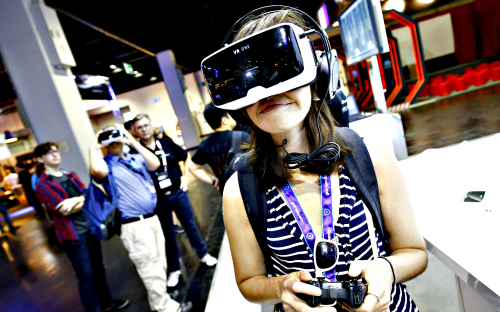As we usher in the New Year, here are five edtech trends to look out for in 2017:
1. Artificial intelligence
By far the most overhyped technology of 2016, artificial intelligence (AI) is becoming ubiquitous in online education. AI combines the processing power of computers with the reasoning abilities of the human mind. It’s already used widely in the consumer tech industry, to power products like Apple’s Siri and Amazon’s Alexa personal assistants.
In future, the technology will make the leap into the wider education industry, predicts Jozef Misik, managing director of Knowble, a language tech start-up whose products are built on AI. The falling cost of the applications will make it possible for faculty to embed them into their courses.
The reward for instructors will be machines capable of performing basic instructional tasks. Algorithms can help teachers evaluate performance and even support content delivery. Deep learning systems can read, write and imitate human behaviour.
Examples range from the “intelligent tutoring” technology used at Colorado State University to improve assessments, to the virtual teaching assistant, Jill Watson, used by Georgia Tech last year.
There will be resistance. Like with the advent of Moocs, some faculty will inevitably be opposed to having to learn to manage the development of applications and the design of algorithms. Fears of faculty displacement are already being fanned.
And as other hyped technologies have shown, just because you can embed the newest innovations into your institution, it does not mean students will welcome them with open arms.
“AI in education is not inevitable — but it’s necessary,” says Satya Nitta, director of education and cognitive sciences at IBM.
2. Micro-credentials
With demand for traditional campus degrees waning, attention is turning to non-traditional “micro” credentials. These non-degree courses offer expertise in niche areas like data science where there is a shortage of talent. They cost a fraction of an MBA and can be stacked to create a customized educational experience.
With more employers warming to online certificates, and people changing jobs more often, expect the trend to surge. People will increasingly need to continue to re-skill, says Anant Agarwal, CEO of online learning platform edX. “This is the age of continuous learning,” he says. “Even once you own a master’s degree, education doesn’t stop there.”
3. Big data
We’ve written about the potential for big data to transform the way students learn. Expect data to play a greater role in online education in 2017. “It’s an amazing resource,” says Julia Stiglitz, vice president of Coursera for Business. Online students leave a stream of information that instructors can hoover up and assess for insights, she says. Using advanced analytical dashboards, faculty can in real-time measure, predict and improve how students are performing. This will allow them to customise syllabi to meet individual students’ needs.
Julia says: “For instance, if only 10 percent of learners taking a quiz are answering correctly, teachers can evaluate how they are teaching this particular point or if the wording of the question is ideal.”
4. Virtual and augmented reality
If 2016 was supposed to be the year virtual reality took off, many in education did not get the memo. So far, few universities could roll out any meaningful VR initiative — but they are increasingly trialling the technology.
At MIT’s Sloan School of Management, executives have already begun exploring virtual classrooms and networking sessions with Google’s Cardboard and Samsung’s Gear.
“We’ve started thinking about true virtual reality — headsets. But we are months or years away,” says Peter Hirst, associate dean of executive education.
The big problems are the high cost of VR devices and the difficulty in setting them up, notes Patrick Mullane, executive director of HBX, Harvard Business School’s digital learning initiative.
Augmented reality, which layers virtual images onto the real world, will be more quickly adopted in education than VR, according to tech consultancy Technavio. Because AR apps can be accessed from mobile devices and tablets, the barrier to entry is lower.
Educators can use AR to build a “4D” learning experience with complete immersion. This has applications in helping students handle virtual structures, visit and connect in global locations.
While beneficial to practical or experiential learning programs, students will probably have to wait a few years before AR and VR become widely available in education.
5. Blended learning
When Moocs first boomed back in 2012 they were billed as challengers to campus education. But over the past few years universities have begun blending bricks and clicks. Most top-tier business schools run highly-ranked “blended” versions of their MBA programs that combine both online modules and face-to-face assessments. This approach allows instructors to provide flexibility but still have an intimate environment where students can network.
In fact, most universities are bringing technology into the physical classroom to enhance the learning experience. In 2017 technology will continue to change how faculty interact with students and disperse content. Educators are pushing pupils to master material before class; lectures are increasingly reserved for discussion and the comparison of perspectives.
RECAPTHA :
49
9d
a9
0c








